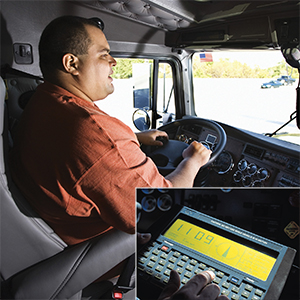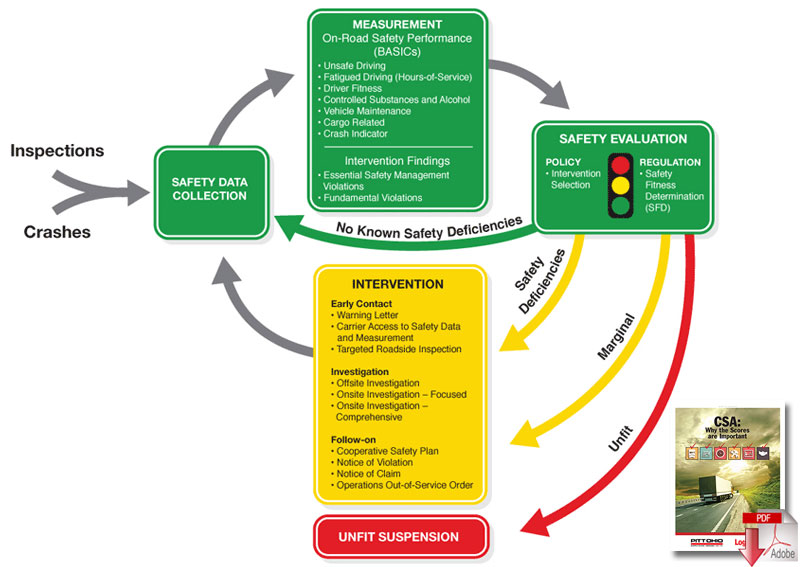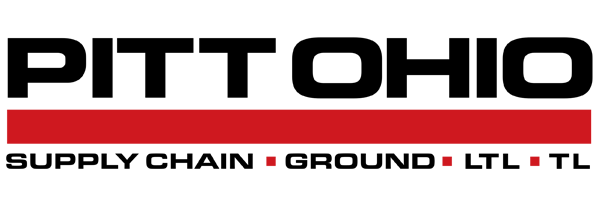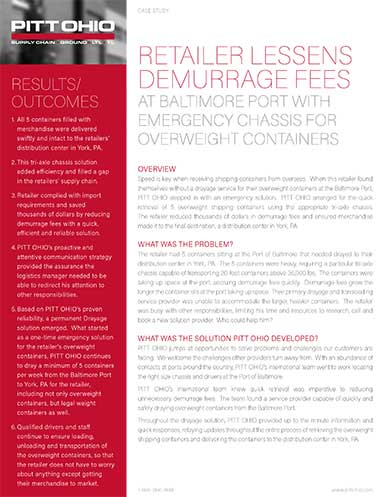What Is Compliance, Safety, Accountability (CSA)?

CSA's new model affects every carrier with one or more vehicles over 10,000 lbs that travels interstate and/or vehicles that carry hazardous materials inside the state, and the model establishes a new, three-part model for compliance and enforcement.
So, what is CSA?
CSA (Compliance, Safety, Accountability) is a major safety measurement and reporting initiative of the Federal Motor Carrier Safety Administration (FMCSA).
Designed to replace the SafeStat program, earlier CSA was known as “Comprehensive Safety Analysis,” or more commonly “CSA 2010.”
CSA includes no new laws. However, almost every aspect of the U.S. commercial motor freight industry is subject to new, expanded safety reporting and enforcement measures.
New measures affect not only motor carriers (trucking companies), but also drivers who operate the equipment, shippers who hire carriers to move freight, and those who operate their own private fleets.
The overall goal of collecting this safety performance and equipment maintenance data is to reduce accidents by pinpointing and addressing areas of concern.
The desired result: Safer highways for everyone.
A New Compliance and Enforcement Model
CSA’s new model affects every carrier with one or more vehicles over 10,000 lbs that travels interstate and/or vehicles that carry hazardous materials inside the state. The model establishes a new, three-part model for compliance and enforcement, which includes:
- Measurement: CSA uses inspections and crash results to measure safety performance. The goal is to identify and address behaviors that could result in crashes.
- Evaluation: CSA helps to address these behaviors using the Safety Measurement System (SMS), which helps pinpoint safety performance issues and to monitor compliance issues over time.
- Intervention: CSA specifies how data is collected, analyzed and shared. It also specifies how officials can best intervene to improve safety.
Measurement
CSA uses the Safety Measurement System (SMS) to collect and report safety data to the public online each month. It measures performance by tracking data - safety violations from roadside inspections, crash data reported by states, and violations identified during FMCSA interventions.
CSA weights safety violations based on their statistical likelihood to cause an accident. It groups violations into categories called BASICs (Behavior Analysis and Safety Improvement Categories). Ratings range from 1 to 10 with least serious violations rated a 1. Ratings get closer to 10 as they get more severe.
A carrier’s measurement for each BASIC depends on:
- Number. How many violations (or crashes) were there?
- Severity. How bad were they?
- Recency. How long ago did they happen?
After determining a measurement, CSA rates carriers in percentiles from 0 to 100 by comparing their measurements with their peers. Lower numbers are better, with percentile 0 being the best. They worsen as they approach 100, which is the worst performance.
Evaluation
CSA uses the Safety Measurement System (SMS) to measure and evaluate safety performance for carriers and to monitor compliance issues over time.
SMS uses measures that:
- Identify history of inspections, violations and interventions
- Identify which carriers need which type of intervention
- Will help identify which carriers are “unfit” to operate using a process called Safety Fitness Determination (SFD)
*Note that the SFD process is still in rulemaking and is not expected to roll out until later in 2011. Until the new SFD is adopted, carrier ratings will continue to appear in SafeStat and www.safersys.org
Intervention
States and the FMCSA use safety measurement results to identify the need for interventions in safety issues with carriers. The purpose is to provide early information about safety issues, allowing carriers the chance to take quick steps to change the behaviors. In some cases, when changes are not enough, CSA investigators can impose penalties.
So, how do these interventions work? CSA uses three progressive intervention categories:
Early Contact
Early contact interventions include warning letters or targeted roadside inspections. Warning letters are mailed to the carrier’s place of business and pinpoint problems with specific BASICs. They state what could result if safety problems continue and offer instructions for carriers to access their data and to get more information.
CSA also provides data to roadside inspectors using the SMS, relating safety problems to specific BASICs. Inspectors may use this data for targeted roadside inspections at permanent or temporary locations. Carriers can also access data and BASICs scores to help them take steps to improve safety.
Investigation
The second progressive type of intervention is an investigation. Three types of investigations are:
- Offsite Investigations take place away from the carrier’s place of business. For these, the FMCSA or state requires carriers to submit documents for examination. Documents might include toll receipts, drug test reports or other information. Investigators use the documents to evaluate the safety issues and to look for causes.
- Onsite Focused Investigations may result when one or two BASICs alerts exist. The FMCSA or state investigates at the carrier’s site, evaluating safety problems and looking for their causes. The scope of these investigations is specific. They target only the problem areas identified.
- Onsite Comprehensive Investigations may result when extensive, repeated, or worsening BASICs alerts exist, or due to a fatal crash or complaint. These onsite investigations examine all areas of the carrier’s business.
Follow-on
The third progressive type of intervention is Follow-on. There are four types:
- Cooperative Safety Plan (CSP): These are voluntary and initiated by the carrier. The carrier works with the FMCSA to develop a plan to address the safety issues.
- Notice of Violation (NOV): These are formal notices that require the carrier’s response. FMCSA may use the NOV when the violations are severe but do not include civil penalties, or when the carrier can work with them to fix the problems quickly. The carrier must show evidence that the issue has been corrected (or effectively challenge the violation) to avoid further interventions or fines.
- Notice of Claim (NOC): The FMCSA issues these in cases when violations are serious enough to call for civil penalties. This is the final progressive step before issuing an Operations Out-of-Service Order (OOS).
- Operations Out-of-Service Order (OOS): This final step in the series of progressive interventions is the most serious. The OOS shuts down the carrier’s motor vehicle operations entirely.
Article Topics
PITT OHIO News & Resources
1-2 Day Reliable Delivery Service Adds Value to Customer’s Overall Offering 6 Reasons Shippers Diversify Their Portfolio of Drayage Providers PITT OHIO heralds new next-day lanes into New England PITT OHIO Wins 2023 Penske Logistics Freight Management Carrier Award Scope 3 Emissions from Freight Transportation Warehouse Solutions for a Variety of Industries PITT OHIO Receives 2nd Supply Chain Sustainability Award More PITT OHIOLatest in Transportation
Talking Supply Chain: Doomsday never arrives for Baltimore bridge collapse impacts Amazon Logistics’ Growth Shakes Up Shipping Industry in 2023 Nissan Channels Tesla With Its Latest Manufacturing Process Why are Diesel Prices Climbing Back Over $4 a Gallon? Luxury Car Brands in Limbo After Chinese Company Violates Labor Laws The Three Biggest Challenges Facing Shippers and Carriers in 2024 Supply Chain Stability Index: “Tremendous Improvement” in 2023 More Transportation














